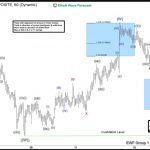
The Barron’s cover story read like a paid advertisement for a mutual fund company. Paid advertisement or not, the company in question was featured for how well its liquid alternative funds have been performing since the broad equity market started to roll over last summer.
Of more interest than the article was a reader comment that both isolates yet misses a key point of active portfolio management (as a note, even if you use passive ETFs, there’s a good chance your strategy is at least a little active even if you don’t realize it).
The comment:
“…I just scrolled down to the table showing the YTD and 5 year returns. Not very impressive. BTW, just about anyone who is underweight stocks has beaten the market YTD.”
The table in question is a table of funds whose names include terms like market neutral, long/short and arbitrage. The reader misses the key point that the objective of these funds is to not look like the equity market which means they won’t go up anywhere near as much as the equity market during bull markets, and will not look like the equities during bear markets (hopefully).
Generically speaking if a fund’s objective is to go up CPI plus 300 basis points then of course its returns will be “unimpressive” in a year when the stock market goes up 20%. That same fund would be considered a huge winner if it went up CPI plus 300 basis points in a year when the stock market goes down 20%.
Considering long term growth, nothing beats equities, again over the long term. We’ve all seen that Ibbotson’s chart back to the 1920’s, growth comes from equities. Of course equities carry the most volatility over the long term (I acknowledge and am intrigued by the theory that equities become less volatile the longer you hold them but that is a topic for a different post).
An investor using liquid alternatives should have the right understanding of their role in a portfolio and the proper expectations of what they can do. The role they play is to help smooth out the ride. In years past I’ve mentioned work by John Serrapere who wrote about a what he called the 75/50 portfolio which sought to capture 75% of the upside with only 50% of the downside. The math works for anyone who can achieve those numbers.













Leave A Comment